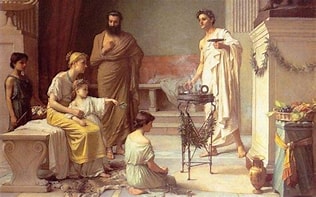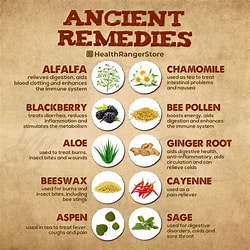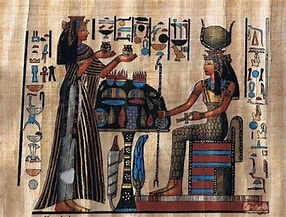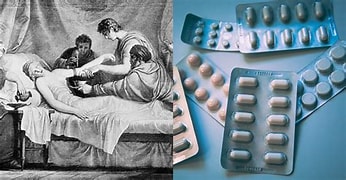Introduction: The Evolution of Medicine
Medicine is one of the oldest and most crucial human practices, impacting every aspect of our lives. If we think back to the earliest forms of healing, we see a stark contrast to the advanced medical treatments available today. From ancient remedies rooted in natural resources to the groundbreaking technology that saves lives today, the history of medicine is a journey of discovery, innovation, and transformation.
The human quest for healing and understanding diseases has spanned thousands of years. Over time, we’ve moved from mystical rituals to scientifically-backed practices, shaping the world of healthcare as we know it. But how did we get here? What were the significant milestones in this evolution? Let’s take a fascinating look at the history of medicine, tracing its development from ancient civilizations to modern medical miracles.

The Dawn of Medicine: Healing in Ancient Times
Early Beginnings: Shamanism and Herbal Remedies
In the earliest periods of human history, medicine was closely intertwined with spirituality and mysticism. Early humans turned to shamans, priests, and healers who used rituals and spiritual practices to cure illnesses. These healers were the precursors to the first physicians, relying heavily on herbal remedies, magic, and belief in the supernatural.
Ancient civilizations, such as those in Egypt, China, and Mesopotamia, began developing more systematic methods of healing. Herbs, plants, and minerals were carefully studied for their medicinal properties. For instance, the Sumerians, Egyptians, and Chinese used plants like opium poppies, willow bark (which contains salicylic acid, a precursor to aspirin), and garlic for pain relief, fever reduction, and infection treatment.

Key Takeaways:
- Early medicine was rooted in magic, spirituality, and natural remedies.
- Herbal remedies and plants were fundamental to early healing practices.
- The role of shamans and priests was central to early medicine.
The Ancient Egyptians: Medical Knowledge Ahead of Its Time
Pioneers of Surgery and Anatomy
The ancient Egyptians made significant contributions to medical knowledge. They practiced early forms of surgery, including trepanation (the drilling of holes in the skull to treat head injuries or conditions like epilepsy). Egyptian physicians had a solid understanding of anatomy, having gained insights from the embalming process, which involved careful dissection of human bodies.
One of the most famous medical texts from ancient Egypt is the Ebers Papyrus, a medical manuscript dating back to around 1550 BCE. It detailed over 700 remedies for various ailments, ranging from common colds to gastrointestinal issues. Ancient Egyptians also understood the importance of hygiene, using cleansing rituals and the use of medicinal oils and unguents to prevent disease.
Key Takeaways:
- Ancient Egyptians had advanced knowledge of anatomy and surgery.
- They developed some of the earliest medical texts, like the Ebers Papyrus.
- Hygiene and prevention were also important aspects of Egyptian medicine.
Classical Greece: The Birth of Rational Medicine
Hippocrates: The Father of Modern Medicine
The Greek physician Hippocrates (460 – 370 BCE) is often called the father of modern medicine. Hippocrates shifted the focus of medicine from supernatural causes to natural explanations. He advocated for a systematic approach to diagnosing and treating diseases based on observation, diagnosis, and clinical study. His emphasis on the importance of diet, exercise, and a balanced lifestyle laid the foundation for the holistic approach to healthcare that we still use today.
Hippocrates’ Hippocratic Oath remains an important ethical guideline for physicians, emphasizing the moral obligation of medical professionals to do no harm.

Key Takeaways:
- Hippocrates is considered the father of rational, scientific medicine.
- The Hippocratic Oath sets the ethical framework for modern doctors.
- Greek medicine focused on natural causes and treatments.
Galen: Advancing Anatomy and Physiology
Galen, a Greek physician who lived during the Roman Empire (130 – 200 AD), significantly advanced the understanding of anatomy, physiology, and pharmacology. He conducted detailed dissections of animals, improving the study of human anatomy. His writings became the foundation for medical knowledge in Europe for many centuries, although some of his theories—such as the belief in the balance of bodily humors—were later disproven.
Key Takeaways:
- Galen’s contributions to anatomy and physiology were groundbreaking.
- His work shaped medieval and Renaissance medicine, even if some of his ideas were later challenged.
The Middle Ages: A Time of Limited Progress
Medicine in Medieval Europe: Superstition and Religious Influence
During the Middle Ages (5th – 15th century), medical progress slowed down in Europe. Much of the healing knowledge from the ancient Greeks and Romans was lost or overshadowed by religious influence. The Church played a dominant role, and medicine was often intertwined with theology. Diseases were frequently seen as punishments for sin or acts of divine will, leading to a focus on prayer and religious rituals as forms of healing.
However, there were still advances in certain areas. For instance, the Islamic world was making significant strides in medical knowledge. Scholars such as Avicenna (Ibn Sina) wrote influential texts, like The Canon of Medicine, which included essential information about surgery, diagnosis, and pharmacology.
Key Takeaways:
- Medical progress in medieval Europe was slow, with superstition and religious influence dominating.
- Islamic scholars, like Avicenna, preserved and expanded upon Greek and Roman medical knowledge.

The Renaissance and the Birth of Modern Medicine
Advancements in Anatomy and Dissection
The Renaissance (14th – 17th century) sparked a renewed interest in scientific inquiry and observation. Pioneers like Andreas Vesalius conducted detailed dissections of human cadavers, leading to a more accurate understanding of human anatomy. His work, De humani corporis fabrica (On the Fabric of the Human Body), corrected many errors made by Galen and laid the groundwork for modern anatomical studies.
During this period, medical schools were founded, and the scientific method began to shape the way medicine was practiced. The era of experimentation and observation was a turning point in the history of medicine.
Key Takeaways:
- The Renaissance saw significant advancements in the study of human anatomy.
- The scientific method began to shape medical practices, leading to more accurate diagnoses and treatments.
The 19th Century: The Rise of Modern Medicine
The Advent of Germ Theory
In the 19th century, the work of scientists such as Louis Pasteur and Robert Koch laid the foundation for germ theory, which revolutionized the understanding of infectious diseases. Before this, many diseases were thought to be caused by miasma (bad air). Pasteur’s discovery that microorganisms were responsible for infections led to the development of vaccines and sterilization techniques that saved countless lives.
Key Takeaways:
- Germ theory explained that microorganisms cause diseases, changing the way medicine was practiced.
- Vaccines and sterilization techniques were developed, dramatically reducing infection rates.
Anesthesia and the Birth of Surgery
The 19th century also saw the development of anesthesia, which made surgeries far less painful and more effective. The use of ether and nitrous oxide allowed surgeons to operate without the risk of patients suffering from pain or shock. This advancement paved the way for complex surgeries, improving patient outcomes and saving lives.
Key Takeaways:
- Anesthesia revolutionized surgery, making procedures safer and more tolerable.
- This breakthrough opened the door for complex, life-saving surgeries.
The 20th Century: Revolutionary Medical Breakthroughs
Antibiotics: The Miracle of Penicillin
The discovery of penicillin by Alexander Fleming in 1928 changed medicine forever. Antibiotics allowed doctors to treat bacterial infections that were once fatal. Diseases like pneumonia, tuberculosis, and sepsis could now be cured, dramatically increasing life expectancy.
Key Takeaways:
- The discovery of penicillin marked the beginning of the antibiotic era.
- Antibiotics revolutionized the treatment of bacterial infections and saved millions of lives.
The Rise of Medical Imaging and Technology
In the 20th century, medical imaging technologies such as X-rays, MRIs, and CT scans transformed diagnostics. These technologies allowed doctors to look inside the human body without performing invasive surgeries, improving diagnosis and treatment accuracy.
Key Takeaways:
- Medical imaging technologies revolutionized diagnostics, allowing for non-invasive procedures.
- These advancements significantly improved treatment outcomes.
Modern Medicine: Miracles of Today
Genetic Medicine and Precision Healthcare
Today, we are entering an era of personalized medicine, thanks to advancements in genetic research. Technologies like CRISPR have opened the door to gene editing, offering the potential to cure genetic diseases at their source. Precision medicine tailors treatments to individual patients based on their genetic makeup, lifestyle, and environment.
Key Takeaways:
- Genetic research is enabling personalized and targeted treatments.
- Technologies like CRISPR may cure genetic diseases in the future.
Artificial Intelligence and Robotics in Surgery
The integration of artificial intelligence (AI) and robotics in surgery is another modern marvel. AI-powered systems can analyze vast amounts of data to assist in diagnostics, while robotic-assisted surgeries offer greater precision, fewer complications, and faster recovery times.
Key Takeaways:
- AI and robotics are improving the accuracy and efficiency of surgeries.
- These technologies reduce risks and enhance patient recovery.
Read This: The Evolution of Fashion Trends: A Look Back at the Last Decade
Conclusion: The Future of Medicine
The history of medicine is a story of transformation. From ancient remedies to modern miracles, our understanding of health and disease has evolved significantly. We’ve come a long way, but the journey is far from over. As technology advances, so will our ability to prevent, treat, and cure diseases, making the future of medicine brighter than ever.
Looking forward, we can expect continued breakthroughs in fields like genetics, AI, and biotechnology. With each discovery, we move closer to a world where medical miracles are no longer just a dream, but a reality for all.
FAQs
1. What was the first form of medicine practiced by humans? The first forms of medicine were rooted in spiritual and mystical beliefs. Early humans relied on shamans and healers who used herbs and rituals to treat illness.
2. How did Hippocrates influence modern medicine? Hippocrates introduced the concept of natural causes for disease and emphasized the importance of observation, diagnosis, and patient care, forming the basis of modern medical practice.
3. When was penicillin discovered, and why was it important? Penicillin was discovered in 1928 by Alexander Fleming. It revolutionized medicine by providing an effective treatment for bacterial infections, saving millions of lives.
4. How has genetic medicine advanced healthcare? Genetic medicine, particularly through technologies like CRISPR, allows for gene editing and personalized treatments based on an individual’s genetic makeup, leading to more targeted therapies.
5. What role does AI play in modern surgery? AI and robotic technologies assist surgeons in performing more precise surgeries, reducing human error, and improving patient outcomes by analyzing vast amounts of data to guide decision-making.


